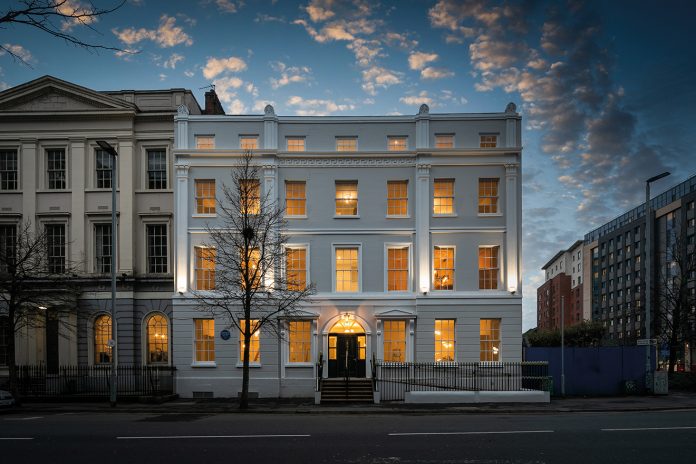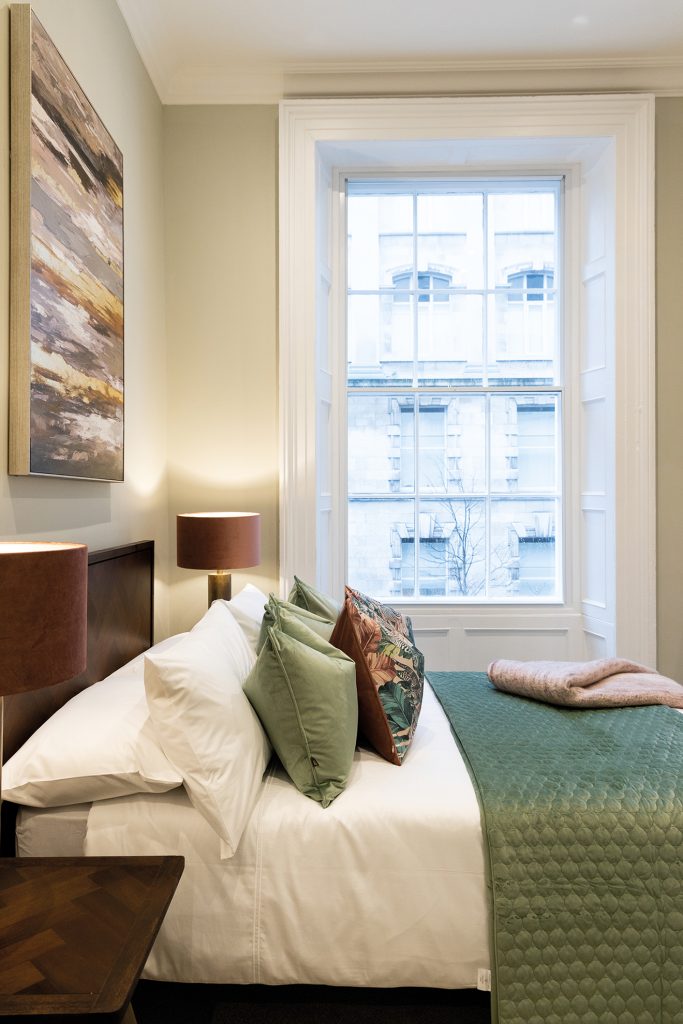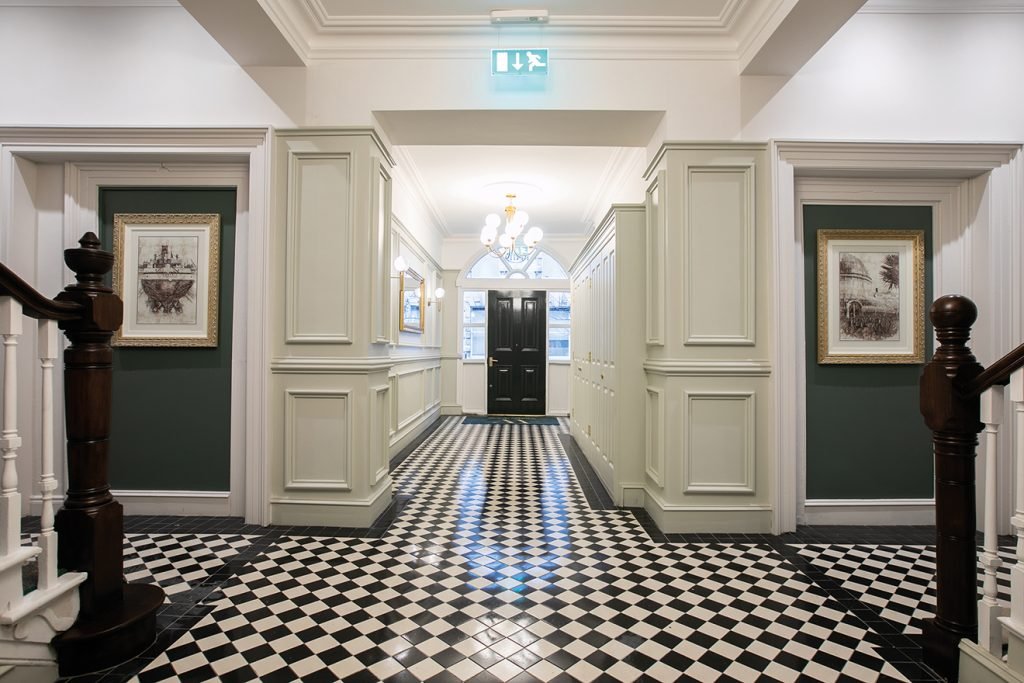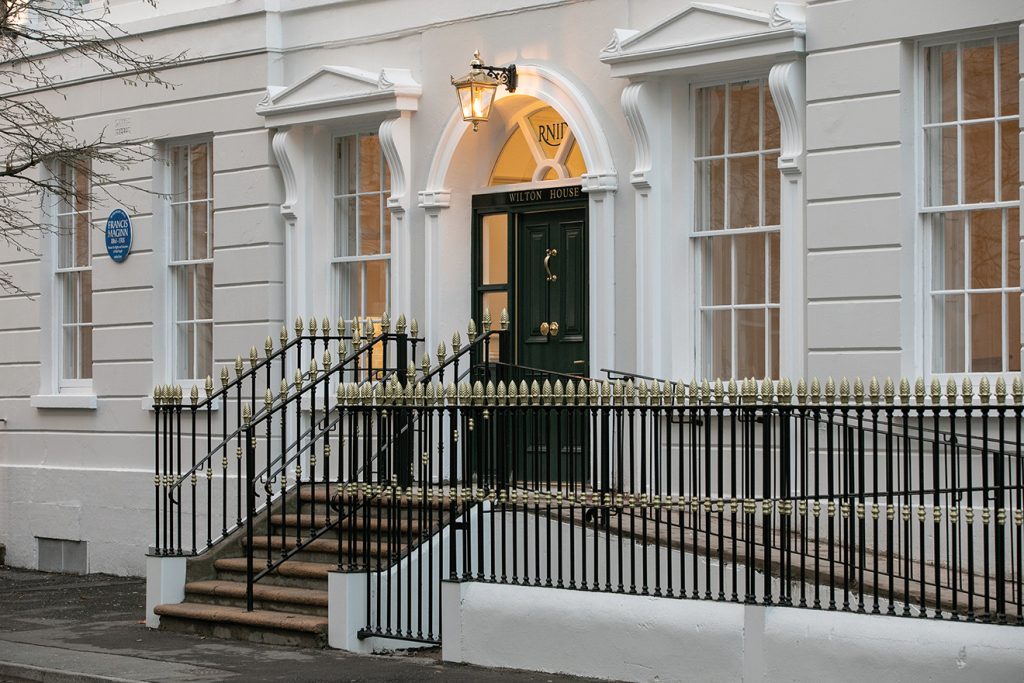Poplar Investments Ltd and Kelly Brothers Building Contractors have allied the best of the past and the present to transform a 19th-century building in the centre of Belfast into serviced apartments with a boutique hotel feel. Wilton House is comprises of 23 luxury apartments divided into two buildings: the original one from 1837 and a brand-new, five-storey tower. The units are available with one, two or three bedrooms, bathroom, smart TV and streaming services, dining space, a totally equipped kitchen and a washer/dryer.
The original building was designed by renowned architect Thomas Jackson, who contributed to the iconic baroque look of Belfast. At first, Wilton House actually comprised two homes. Over the next 200 years, it became a hotel and then the headquarters of the Royal National Institute for Deaf People. The building had been vacant since 2012 and, in 2019, Michael Brannigan from Poplar Investments Ltd proposed a £4.5 million redevelopment, including a new build led by Kelly Brothers Building Contractors. In 2023, the property was purchased by investor and entrepreneur Justin Quirk.
Character and personality
“It’s so important in any city for buildings with historical importance such as Wilton House to be maintained and kept up to date to reflect the past,” Michael commented. He took on the project in conjunction with his dad, who sadly passed away last year. “We were looking for something interesting, with a lot of character and personality.”
Construction started in December 2021, and Michael commented there was a lot of due diligence by the Historic Environmental Division (HED), and for a good reason, as Wilton House is of historical importance. With the help of RPP Architects and conservational architects Consarc Design Group, they established a design that would ensure the historical features would be preserved not only in the appearance of the building but also in the actual build-up, which was exemplified by the use of lime plaster as it was done 200 years ago to ensure wall breathability.
“There was actually very little of the old building left when we arrived,” Michael explained. “The floor plan is still the same, but there were next to no period features left, no doors or fireplaces. It was more like an empty shell. Fortunately, the original staircases were still intact, as were some skirtings, architraves, and covings.” Poplar had to source local traditional craftsmanship and luckily found Palmer’s Mouldings to restore and recreate the ornate covings and centrepieces (see more on page 28), and Spincraft to replace missing spindles and newel posts.
Michael is over the moon with the result. “You start off these projects with a picture in your head of how it is going to look and feel once it is done, and there are so many points along the journey when you doubt yourself, but it turned out really well.”
Modern luxury
The original building and the new one are connected by a courtyard. “The new building is pretty much modern apartment living and we have brought across as many elements from the 1837 building as possible to maintain the flow. They offer the same boutique hotel style and comfort as the main house,” Michael stated.
The work on the five-storey building was done by Kelly Brothers and commenced in March 2022. “The original building not only inspired the design but also the choice of materials for the new one, like Staffordshire blue brick and standing seam cladding,” explained Sean Cunningham, Contracts Manager at Kelly Brothers.
Housing and commercial projects are the contractor’s bread and butter, and Kelly Brothers had worked in projects involving historical buildings before, but Wilton House posed some challenges. “The biggest problem was space, as the entire site was practically taken over by the new build. We only had a slither of room to park and get the machinery in,” Sean commented. Being in a busy part of the Belfast city centre, the location also presented some difficulties regarding receiving and unloading deliveries.
Extremely poor ground conditions were another issue. The contractors used Continuous Flight Auger (CFA) piles, which went roughly 20 meters in depth. They also had to employ lightweight materials, such as metal studding and partitions instead of block work, as it would have been too heavy to build the five-storey structure in a small area. “At the same time, we had to be very careful as there are so many early 20th-century buildings nearby,” Sean explained.
Even with contractors working on both buildings and in different stages of the project, the work was well coordinated, and Kelly Brothers are very happy with the results. Sean explained: “We brought special tradesmen specialised in finishing to ensure maximum attention to detail to the last touches. We are very proud of the quality of the project.”
For the full feature on Wilton House, check out NI Builder Issue 34-2 April-May here.












